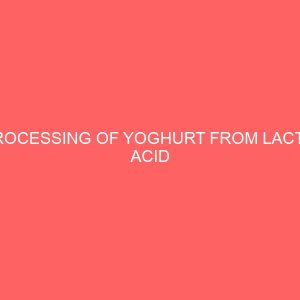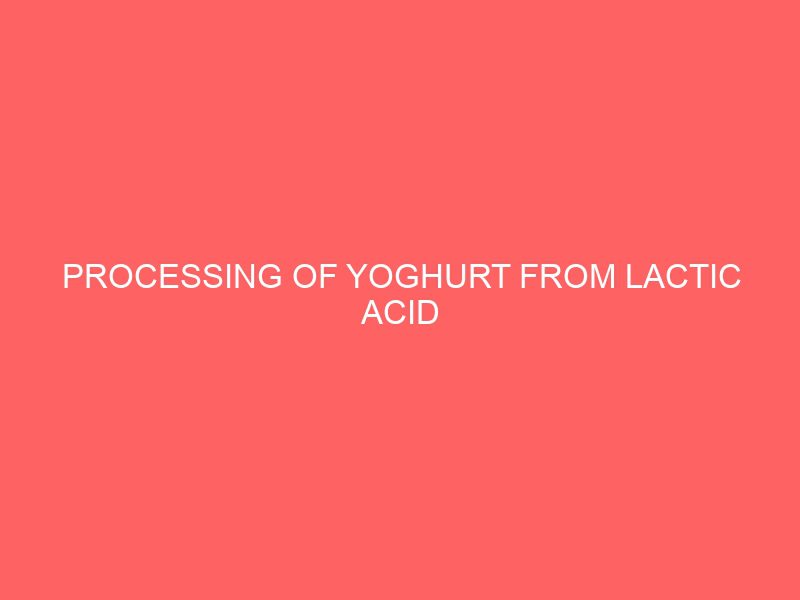Description
CHAPTER ONE
1.0 INTRODUCTION
Yoghurt is a fermented dairy product obtained from the lactic acid fermentation of milk. It is one of the most popular fermented milk products in the world and produced commercially at home. Willey et al., 2008. In its commercial production, non fat or low fat milk is pasteurized cooled to 43c and are inoculated with known cultures of microorganisms referred to as starter cultures. The starter cultures may be a pure culture of a particular species of Lactobacillus or a mixed culture of Streptococcus thermophilus and Lactobacillus bulgaricus in a 1: 1 ratio. The coccus which is the Streptococcus thermophilus grows faster than the Rod which is the Lactobacillus bulgaricus and is primarily responsible for acid production while the rod adds flavor and aroma. The growth of these Microorganisms causes the transformation of milks sugar, lactose into lactic acid. This process gives yoghurt its texture. The associative growth of the two organisms results in acid production at a rate greater than that produced by them individually.
Yoghurt is generally made from a standardized mixture containing whole milk, partially defatted milk, condensed skim milk cream and non fat dry milk. Alternatively milk may be partly concentrated by removal of 15 20 water in a vacuum pan or by heating. While the microorganisms fermenting milk confers on it certain health benefits inadequate pasteurized milk may contain microorganism of special importance to man. Boor and Murphy, 2002. In which its presence or absence in milk may reflect success or failure of good manufacturing practice GMP or cause infection when consumed together with food. This is of economic significance in Africa where the HIV/AIDS and cancer scourge has left the public who consume milk products immune suppressed and prone to bacterial and fungi infection. Boor,2001.
Health complications associated with consumption of inadequately pasteurized milk products include serious infections that are hard, to treat with antibiotics. This becomes clinically significant if organisms isolated from an assessed sample is resistant to conventional antibiotics. Thus, can confer antibiotic resistance to the infected host while providing no alternative drug Gould, 1994. Heat treated yoghurt do not contain lactic acid bacteria as these are killed during post fermentation. Yoghurt manufacturing companies mainly market heat treat yoghurt to prolong its shelf life Hove et al, 1999. It is important however to evaluate the microbial gravity of some milk products sold in Nigeria. This project work aims at assessing the antimicrobial susceptibility pattern of microorganisms present in yoghurt sold in Enugu.








Reviews
There are no reviews yet.